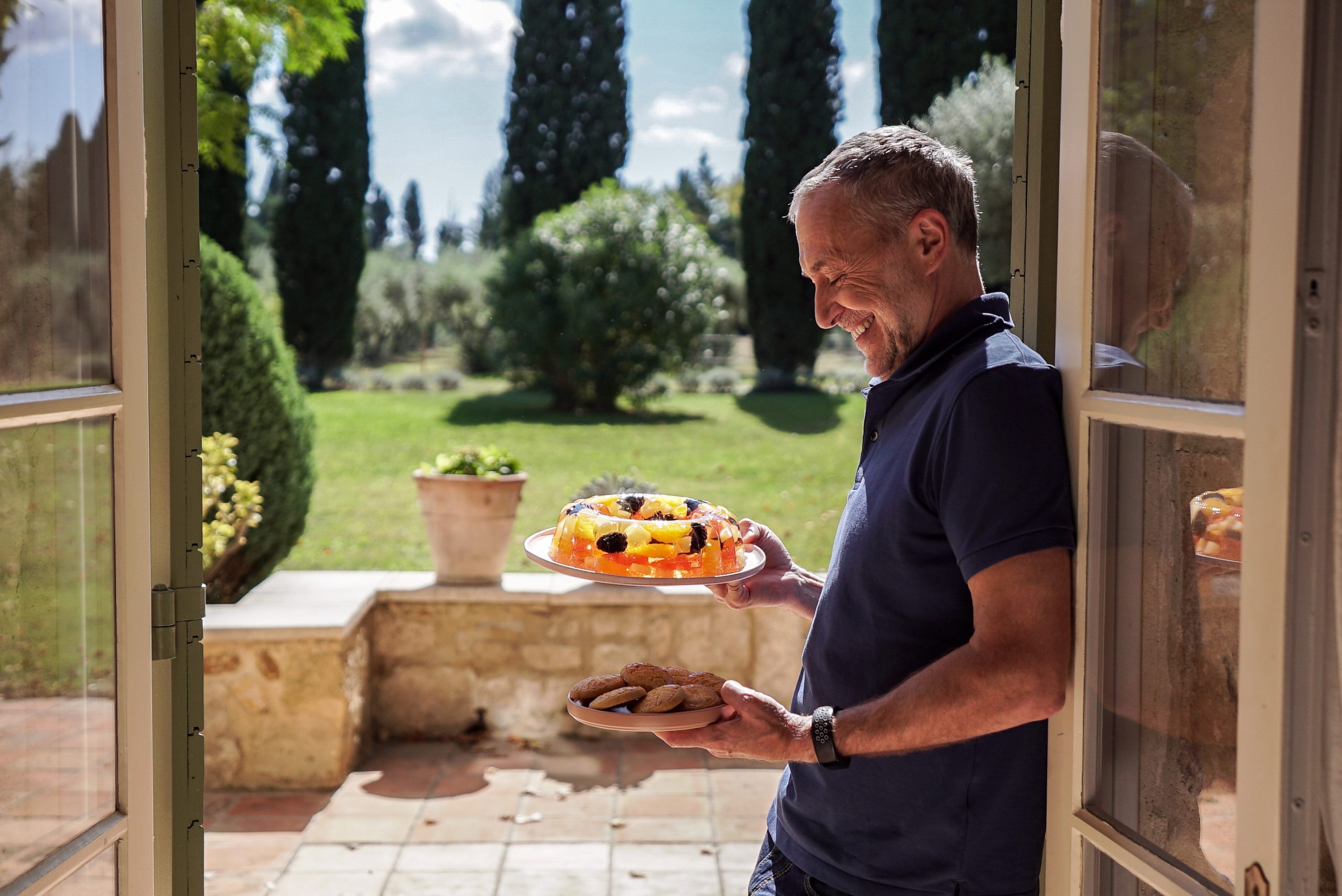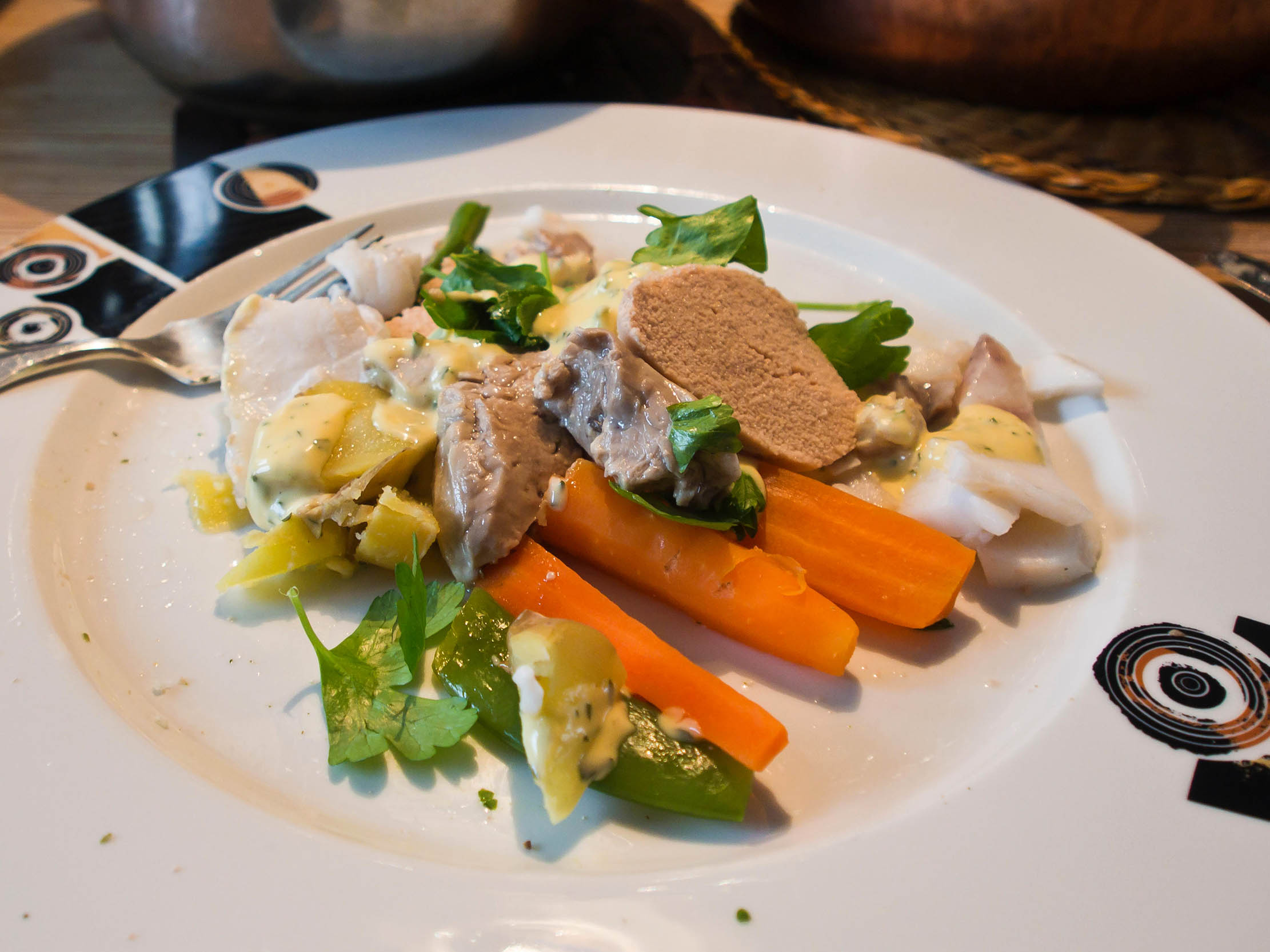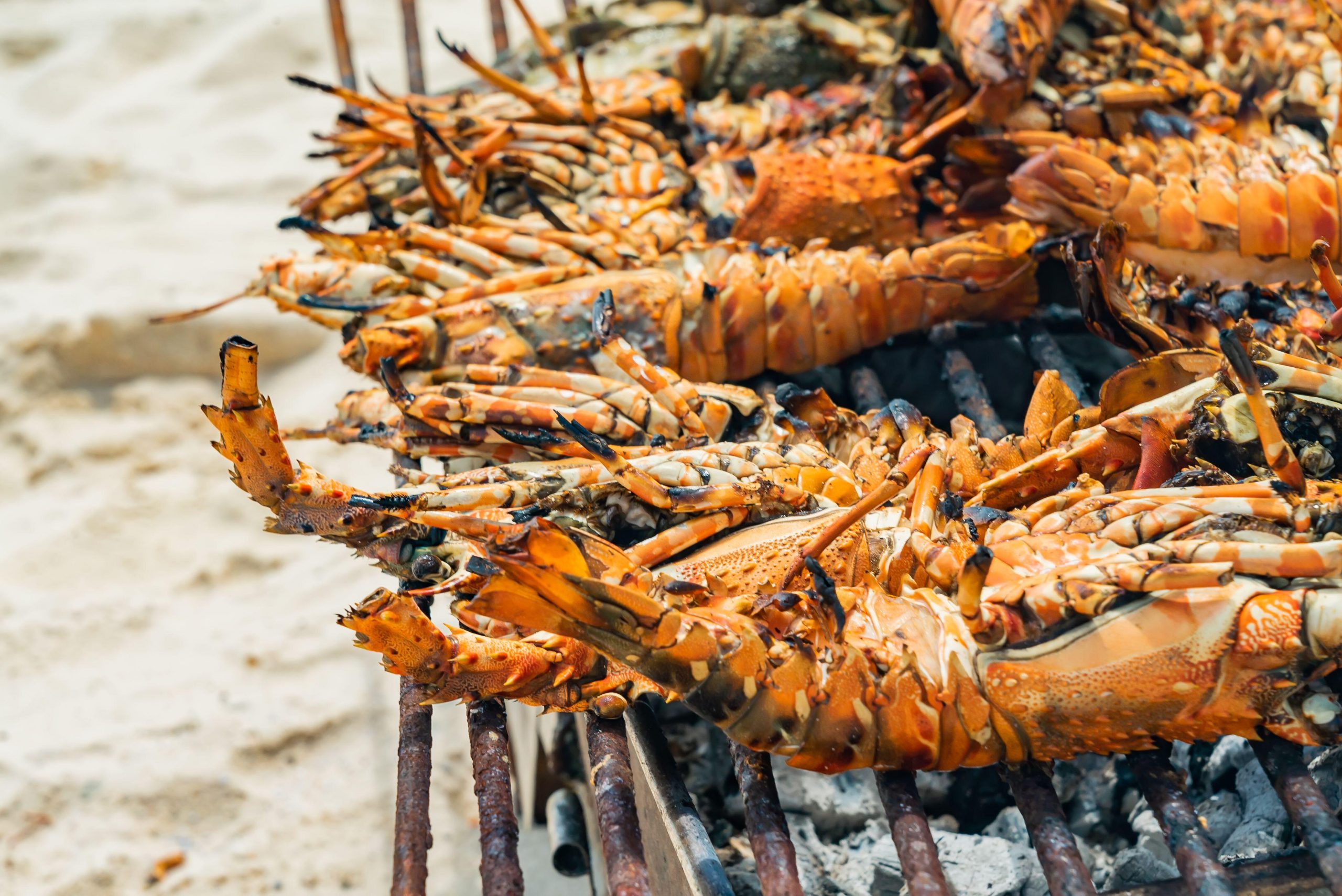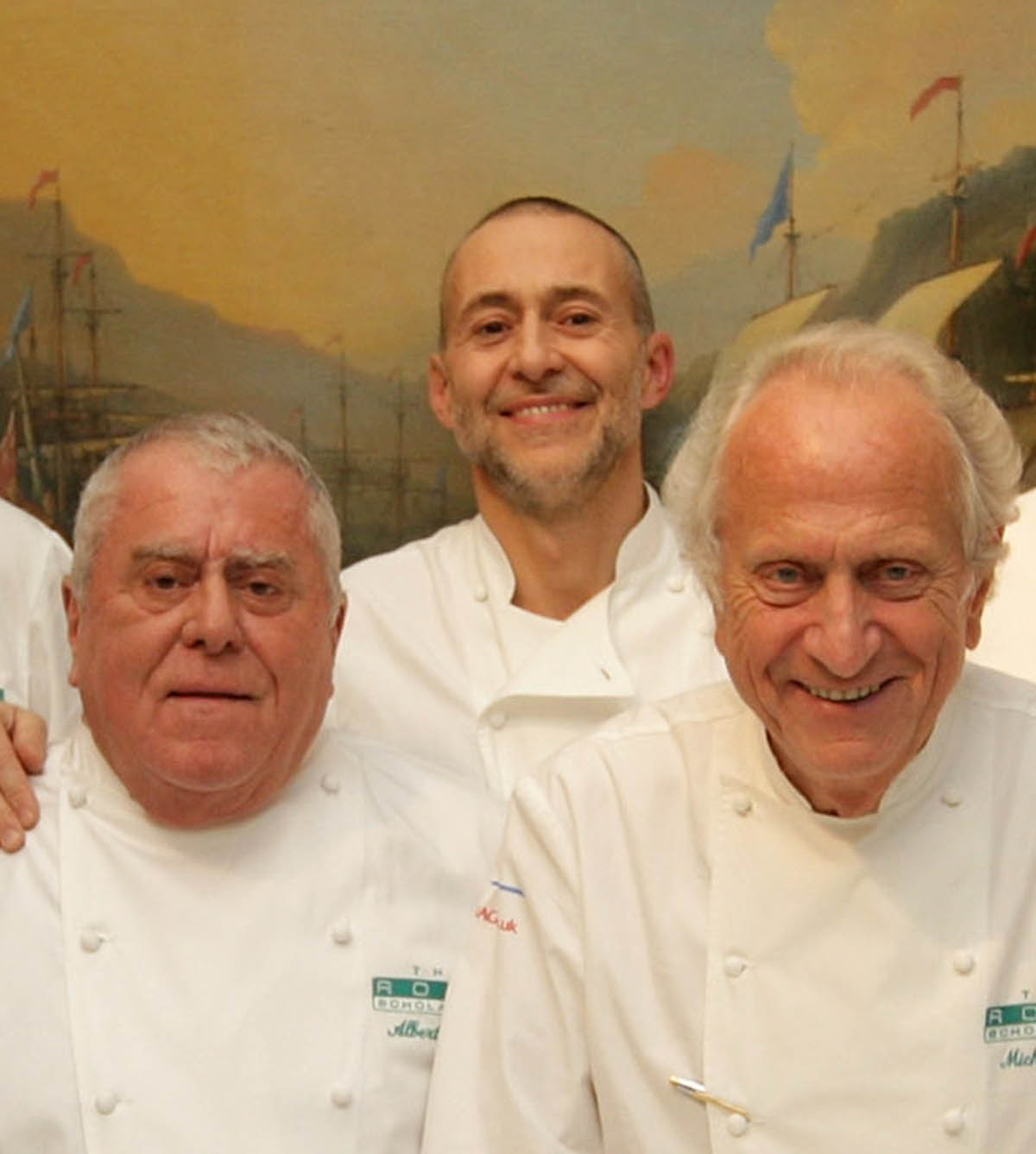Michel Roux Jr: My eight favourite dishes of a lifetime
The award-winning chef and broadcaster Michel Roux Jr chooses the eight dishes he couldn't live without.

Living up to the reputation of a famous parent isn't easy; and surpassing that reputation is almost unheard of — so you have to hand it to Michel Roux Jr for even trying to do so, let alone managing it. His father, Albert Roux, became one of the nation's most famous chefs in the 1960s when, along with his brother Michel, he moved to England and founded Le Gavroche in London. It became the first restaurant in Britain to win a Michelin star, then the first to win both two and three Michelin stars, and launched the careers of chefs including Gordon Ramsay, Marcus Wareing and Marco Pierre White.
The younger Michel (he has now officially dropped the 'Jr') actually spent much of his early career training away from his father and uncle's restaurants, including a spell cooking for President Mitterand of France at the Elysée Palace, a job which formed part of his French national service. He eventually returned to the family business — which by now also included the equally-famous Waterside Inn in Bray — and in the mid 1980s began working at Le Gavroche. He went on to become chef-patron in the 1990s, a role he still proudly carries out full-time despite his work in media — of which his latest appearance is Michel Roux’s Provence Masterclass, which begins at 9pm on Monday 13th March on the Food Network and the Discovery+ streaming service.
Now approaching in his 60s — he'll be 63 in May — Michel kindly spoke to us to share his favourite dishes of a lifetime. We asked him to name the things he could happily eat between now and doomsday, a selection of dishes which blend joy, nostalgia and above all the love of superb food.
Cacio e pepe — 'Lovely earthy vegetable-ness'
I’m going to start with a dish that has become a signature dish at my daughter and son in law’s restaurant in Notting Hill. The restaurant is called Caractère and it’s a dish that they’ve had since day one and has become so popular. It is the 'cacio e pepe' but it’s made with the root vegetable, celeriac. They slice the celeriac super thin, so it resembles tagliatelle and then make it into a 'cacio e pepe'. It’s wonderful as it has the texture of pasta, the flavour of the famous dish, 'cacio e pepe' with the cheese and cream and pepper, but it’s got that lovely earthly vegetable-ness from the celeriac. That is definitely one I’d take with me on my desert island.
Cheese soufflé — 'A bowl full of pleasure'
Next up, the cheese soufflé — or Soufflé Suissesse — which has been on the menu at Le Gavroche since 1967, so 55 years. One day, I’m going to have to sit down with a calculator and figure out how many of these soufflés I’ve made at the restaurant! On average we do about 60 a day, it really is incredible.
We get grandparents bringing their grandchildren to the restaurant and saying, ‘you must try this soufflé’. I remember eating it when I was younger. It’s almost like an initiation of coming to eat at Le Gavroche – you’ve got to try the cheese soufflé. We’ve got guests flying in from all over the world now and the first thing they say when they sit down is cheese soufflé. It’s stood the test of time and it’s a bowl full of pleasure. It’s a great dish. One I can’t take any credit for as it was my father and uncle who put it on the menu.
Rillette — 'A huge hit of flavour'
Next up is the great French classic, rillette. I grew up with rillette. Most French families always have a pot of in the fridge. It’s a go to quick lunch or snack, whether you make them yourself or buy them in.
Sign up for the Country Life Newsletter
Exquisite houses, the beauty of Nature, and how to get the most from your life, straight to your inbox.
You can make rillette with all kinds of meats, but the classic one and most common one is pork. It’s a spreadable pork, quite fatty and there’s nothing like it. Whether you’re putting it in a freshly cooked baguette like a sandwich, or on some grilled sourdough for a snack or an aperitif, it’s wonderful. A huge hit of flavour.

It’s a little bit naughty as it’s quite fatty... but then most good food is a bit naughty. And, to make your own rillette? It takes a little bit of time, but it’s actually not that difficult so it’s well worth giving it a go. It’s something we do often in the family. [Michel shared his recipe for pork rillette in a previous TV show, Michel Roux's French Country Cooking, series two, episode one.]
Guy Savoy's artichoke and black truffle soup — 'The best soup in the world'
I’m going to go soup for the next one, but it’s not just any old soup. It is what I very often refer to as the best soup in the world, and that is the artichoke and black truffle soup from Guy Savoy, who’s a three Michelin star chef in Paris and it’s his signature dish. Every time I’ve been to eat at his restaurant, it’s a bit like the cheese souffle moment at Le Gavroche, I sit down, and I don’t look at the menu, I just say I know what I want as a starter, it’s the soup.
It’s been on his menu I think for the best part of 30 or 40 years, and it’s stood the test of time. It is just one of those dishes that takes you to another place. It's served classically, as you would any soup, in a bowl, with little slices of truffles floating on top. He serves it alongside a toasted brioche filled with truffle butter — so it’s butter on butter — that you can use to dunk in the soup... and then you just dive in and slurp away. It would be up there in my top 10 dishes, any time of day: breakfast, lunch, or dinner, I would have that.
Pork Tripe Soup — 'Mind-blowingly good... proper, real street food'
We love offal in the family, it’s something we always eat, always a go-to. I remember walking down this side street in Hong Kong with my wife late at night; it was stiflingly hot as it can get, in quite an oppressive way, and the last thing you'd want to eat is a bowl of soup. But there were people walking past and pointing at this shack serving pork tripe soup with all the innards. So, there was lots of liver being fried, and lungs hanging up, and all the entrails bubbling up in a pot... and we stopped, and the smell was just unreal — in a good way, at least for us!
We just pointed at it, and the guy serving it frowned and, if I remember rightly, hardly spoke any English. He shook his head and looked at us as if to say, ‘Are you sure you want this?’, and we said ‘yes’... and it was mind-blowingly good. We had a little bit of fresh chilli on top, and some coriander, and we just sat down in the corner on these rickety chairs, and... well, it wasn’t the cleanest place in Hong Kong, but my god that food was good. It was proper, real street food.
Mølje — 'A celebration of the Rolls-Royce of cod'
The traditional, classic Norwegian winter dish, mølje, which is basically a celebration of cod would also be one of my chosen dishes. Not just any cod, though: it’s skrei cod, a seasonal cod that swims from the Barents Sea to the Lofoten islands. I think it’s the Rolls-Royce of cod.
What they do is take this amazing fish and simmer it in salted water — but not just the cod flesh; it's also the liver and the roe, and they serve it with sliced, raw onions and boiled potatoes. When you eat fresh cod’s liver like that, it’s quite unbelievable — it’s almost like butter — and the cod is so firm and white. It’s an incredible dish.
You’re eating freshly cooked liver, roe, cod, boiled potatoes and it’s always celebrated in Norway as the start of the season, which is usually in January, or February at the latest. I’ve had that cooked by fisherman’s wives, so that’s a memory that’s perfect: you can see the joy and celebration of people coincide with the first setting of the sun in Norway.

Grilled lobster cooked over coconut husks on the beach — 'Just this beautiful, heavenly moment'
When I got married to Giselle, we eloped. We ran away to the Seychelles to get married without inviting anybody or telling anybody and, on our honeymoon night, we had a grilled, roast lobster on the beach, and it was just the most unreal thing. It was so special: just the two of us on the beach with lobsters being cooked over coconut husks while watching the sunset; we had a bottle of South African cheap rosé in an ice bucket — I think it was a plastic ice bucket actually, very rudimentary!
And of course, lobster sounds posh and plush and expensive, but going back 30 years ago on the Seychelles islands lobster were two-a-penny, in abundance and not expensive. It was just this beautiful, heavenly moment: getting married and enjoying our first kind of tête-à-tête meal as man and wife on an idyllic little speck of sand in the middle of the Indian Ocean. That would have to be up there.

Michel Roux Sr's pulled-sugar sculptures — 'Like watching a magician'
The last one is a nod to my uncle Michel. One of my first childhood memories of food is the smell and sound of my uncle making beautiful pulled-sugar sculptures. I think I was probably about 5 or 6 at the time and I remember seeing him practising for competitions and making his sugar work. He was practising for the Meilleur Ouvrier de France, which is a very tough competition for professional chefs — he would eventually win it, but years later. As a child, though, I remember hearing, seeing, and smelling this caramel sugar being cooked and pulled and made into these beautiful sculptures. He was making roses and flowers, and blowing sugar into oranges and bananas, and making these towers of sugar.
His work was that of a true artist: it was incredible. And every now and then when he would break something or it didn’t work, he would bend down to the table and I would get a little piece, a broken petal of sugar. As a child the sugar being turned into these edible sculptures was just like watching a magician work, and it was quite incredible.
Michel Roux’s Provence Masterclass, which begins at 9pm on Monday 13th March on the Food Network and the Discovery+ streaming service.


Sophie Grigson: My eight favourite dishes of a lifetime
What would be your eight dream dishes of a lifetime? Chef, TV presenter and food writer Sophie Grigson shared hers
Toby Keel is Country Life's Digital Director, and has been running the website and social media channels since 2016. A former sports journalist, he writes about property, cars, lifestyle, travel, nature.
-
 Jungle temples, pet snakes and the most expensive car in the world: Country Life Quiz of the Day, April 14, 2025
Jungle temples, pet snakes and the most expensive car in the world: Country Life Quiz of the Day, April 14, 2025Mondays's quiz tests your knowledge on English kings, astronomy and fashion.
By James Fisher
-
 Welcome to the modern party barn, where disco balls are 'non-negotiable'
Welcome to the modern party barn, where disco balls are 'non-negotiable'A party barn is the ultimate good-time utopia, devoid of the toil of a home gym or the practicalities of a home office. Modern efforts are a world away from the draughty, hay-bales-and-a-hi-fi set-up of yesteryear.
By Annabel Dixon

